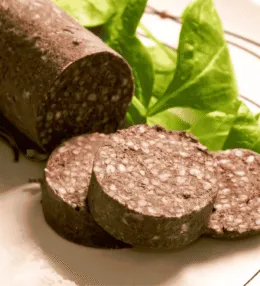
- View
Table of Contents
TogglePad Thai is one of Thailand’s most iconic dishes, loved for its vibrant flavours, rich textures, and satisfying balance of sweet, sour, salty, and spicy notes.
This stir fried noodle dish, often served with shrimp, chicken, or tofu, has become a favourite worldwide, offering a taste of Thai street food culture in every bite. With its combination of stir fried rice noodles, tamarind sauce, peanuts, and fresh herbs, Pad Thai represents the perfect harmony of ingredients that Thai cuisine is known for.
Want to dive deeper into Thai Cuisine? Don’t miss our post on 36 Traditional Thai Foods To Try
What Is Pad Thai?
Pad Thai is a stir fried noodle dish that brings together an array of flavours and textures in a single, delicious plate. Traditionally made with thin rice noodles, the dish is stir fried with eggs, a protein like shrimp or chicken, tofu, and a mix of vegetables.
What sets Pad Thai apart is its signature sauce, a blend of tamarind paste, fish sauce, sugar, and lime juice, which creates a sweet, tangy, and slightly salty flavor. Peanuts are sprinkled on top for a crunchy finish, and bean sprouts add a refreshing bite.
At the heart of Pad Thai is the technique of wok cooking, where high heat is used to create a smoky char that deepens the flavor of the dish. It’s quick, flavourful, and endlessly satisfying, making it a go-to comfort food for many. Whether served in humble street stalls or high-end restaurants, Pad Thai remains a dish that people come back to time and time again.
Ingredients and Taste
The ingredients in Pad Thai are simple, but each one contributes to the dish’s complex flavor. Rice noodles, which are soft and slightly chewy, form the foundation of the dish. The protein, often shrimp, chicken, or tofu, adds heartiness and absorbs the flavours of the sauce beautifully. Eggs are scrambled directly into the stir fry, adding richness and texture.
The sauce is the star of Pad Thai, blending tamarind paste for tanginess, fish sauce for saltiness, and palm sugar for sweetness. Lime juice brings a refreshing acidity that ties everything together.
Topped with roasted peanuts and fresh herbs like cilantro or green onions, the dish has a perfect mix of textures, from the crunch of the peanuts to the silkiness of the noodles. The balance of sweet, sour, salty, and spicy elements makes each bite exciting, leaving a lasting impression on the palate.
A Taste of History
Pad Thai’s history is as rich and layered as its flavours. Despite its deep association with Thai cuisine, Pad Thai as we know it today was popularized in the mid-20th century as part of a government initiative to promote Thai nationalism.
During a time of economic hardship in the 1930s and 40s, rice was a valuable export, and the government encouraged the consumption of noodles as a way to conserve rice. This led to the creation and popularization of Pad Thai, which quickly became a symbol of national identity. While its origins may be relatively recent, Pad Thai draws from centuries of culinary influence, blending Chinese stir frying techniques with local Thai ingredients.
The use of tamarind, fish sauce, and peanuts speaks to Thailand’s diverse culinary history, where different cultures and flavours have come together to create something truly unique. Today, Pad Thai is enjoyed not just in Thailand but across the globe, offering a flavourful introduction to Thai cuisine.

Pad Thai (Thai Stir Fried Noodles)
Ingredients
- 200 g rice noodles
- 200 g shrimp chicken, or tofu (optional, as per preference)
- 3 tbsp tamarind paste
- 2 tbsp fish sauce
- 1 tbsp soy sauce
- 1 tbsp palm sugar or brown sugar
- 2 tbsp vegetable oil
- 3 cloves garlic minced
- 1 shallot finely chopped
- 2 eggs lightly beaten
- 1 cup bean sprouts
- 2 spring onions sliced
- 1/4 cup crushed peanuts
- 1 lime cut into wedges
- Fresh coriander cilantro for garnish
- Chili flakes optional
Instructions
- Soak the rice noodles in warm water for 30 minutes, or until soft but not mushy. Drain and set aside. Preparing the noodles in advance ensures they stay tender when stir-fried.
- In a small bowl, combine tamarind paste, fish sauce, soy sauce, and palm sugar. Stir until the sugar dissolves. Adjust the seasoning if needed by balancing the sweetness and tanginess of the tamarind sauce.
- Heat 1 tablespoon of vegetable oil in a wok or large skillet over medium heat. Add minced garlic and chopped shallots, stir-frying for 30 seconds until fragrant. Avoid burning the garlic for a more balanced flavour.
- Add the protein of your choice; shrimp, chicken, or tofu, and stir-fry for 2-3 minutes until fully cooked. If using shrimp, cook until they turn pink. Remove the protein from the wok and set it aside.
- Add another tablespoon of oil to the wok. Pour in the beaten eggs and scramble gently. Once cooked, push the eggs to one side of the pan to create space for the noodles.
- Add the softened rice noodles to the wok, pouring the tamarind sauce mixture over them. Toss everything together gently to ensure the noodles are coated evenly with the sauce. Stir-fry for 2-3 minutes, letting the noodles absorb the sauce.
- Return the cooked protein to the wok, along with bean sprouts and spring onions. Stir-fry for another 2 minutes, just until the bean sprouts are lightly softened. Adjust the seasoning with a little more fish sauce or soy sauce if needed.
- Serve the Pad Thai immediately, garnished with crushed peanuts, fresh coriander, and lime wedges on the side. For extra heat, sprinkle with chili flakes. The lime juice enhances the dish, offering a perfect balance of sweet, salty, and tangy flavors.






